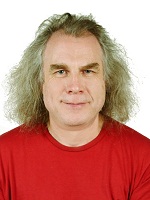Invited Speaker

Prof. Sergei Alexandrov
Ishlinsky Institute for Problems in Mechanics RAS, Russia
Bio: Sergei Alexandrov is a Research Professor of the Ishlisky Institute for Problems in Mechanics of the Russian Academy of Sciences (Russia), a Visiting Professor at Beihang University (China) under the program “Recruitment Program for Global Experts”, and an adjunct faculty member of Ton Duc Thang University (Vietnam). He received his Ph.D. in Physics and Mathematics in 1990 and D.Sc. in Physics and Mathematics in 1994. He worked as a professor at Moscow Aviation Technology Technical University (Russia), a visiting scientist at ALCOA Technical Center (USA), GKSS Research Centre (Germany), Seoul National University (South Korea) and National Chung Cheng University (Taiwan), and a visiting professor at National San Yat Sen University (Taiwan) and University of Franche-Comte (France). His research areas are plasticity theory, fracture mechanics and their applications to metal forming and structural mechanics. He is a member of the Russian National Committee on Theoretical and Applied Mechanics.
Finite Plastic Bending Under Plane Strain Conditions
Abstract: Finite plastic bending attracts researchers' attention due to its importance for identifying material properties and frequent occurrence in sheet metal forming processes. This presentation focuses on analytic and semi-analytic solutions for pure bending and bending under tension. Both elastic- and rigid- plastic models are considered, but the material is supposed to be incompressible. It is shown that elasticity can be ignored even if residual stress and strain fields are concerned. The solution is facilitated by using Lagrangian and cylindrical coordinate systems. The origin of the latter moves as the deformation proceeds. This unified approach allows for several isotropic material models, such as Perfectly plastic material, Strain hardening material (isotropic hardening), Strain hardening material (kinematic hardening), Viscoplastic material, Damage mechanics models. Some anisotropic models are also considered.